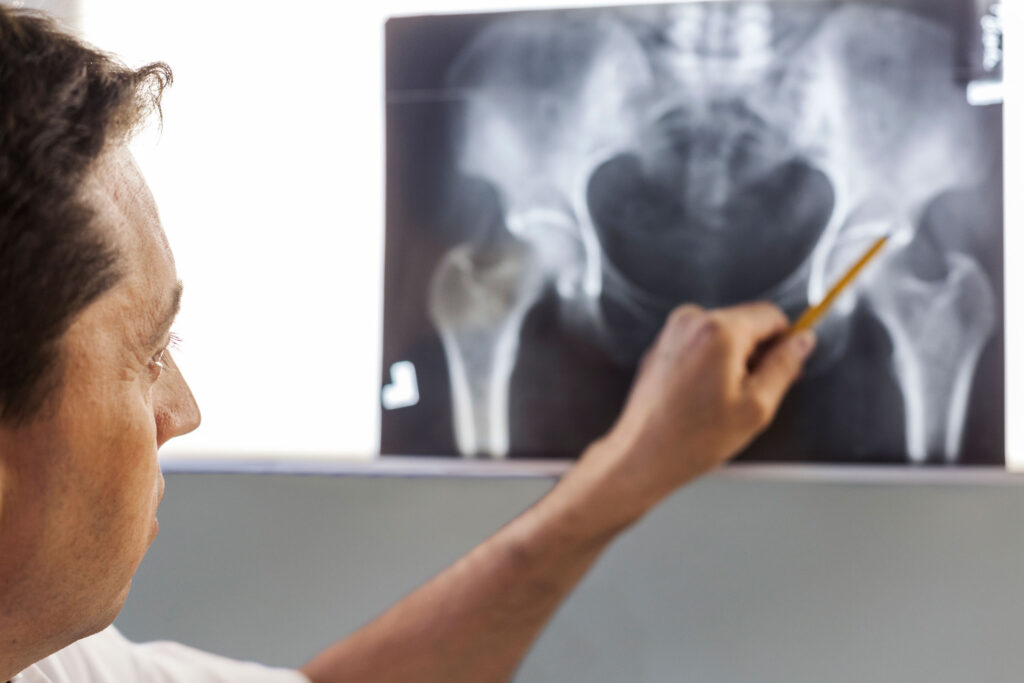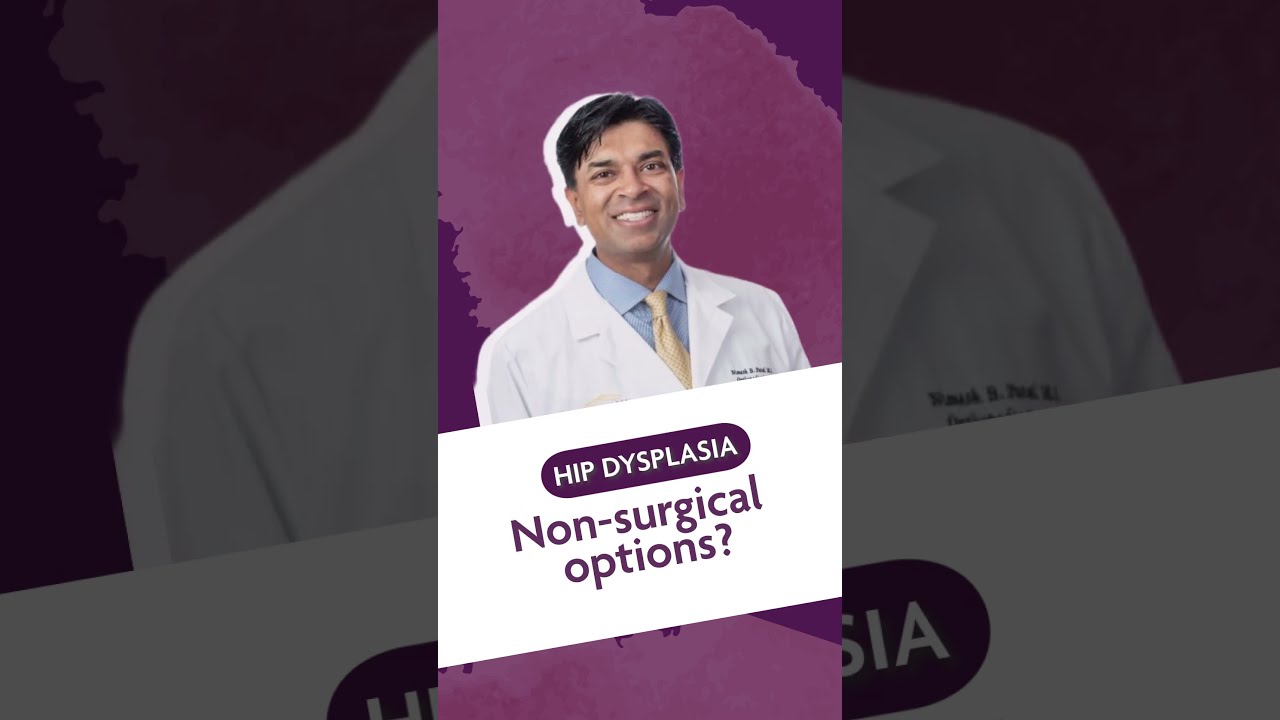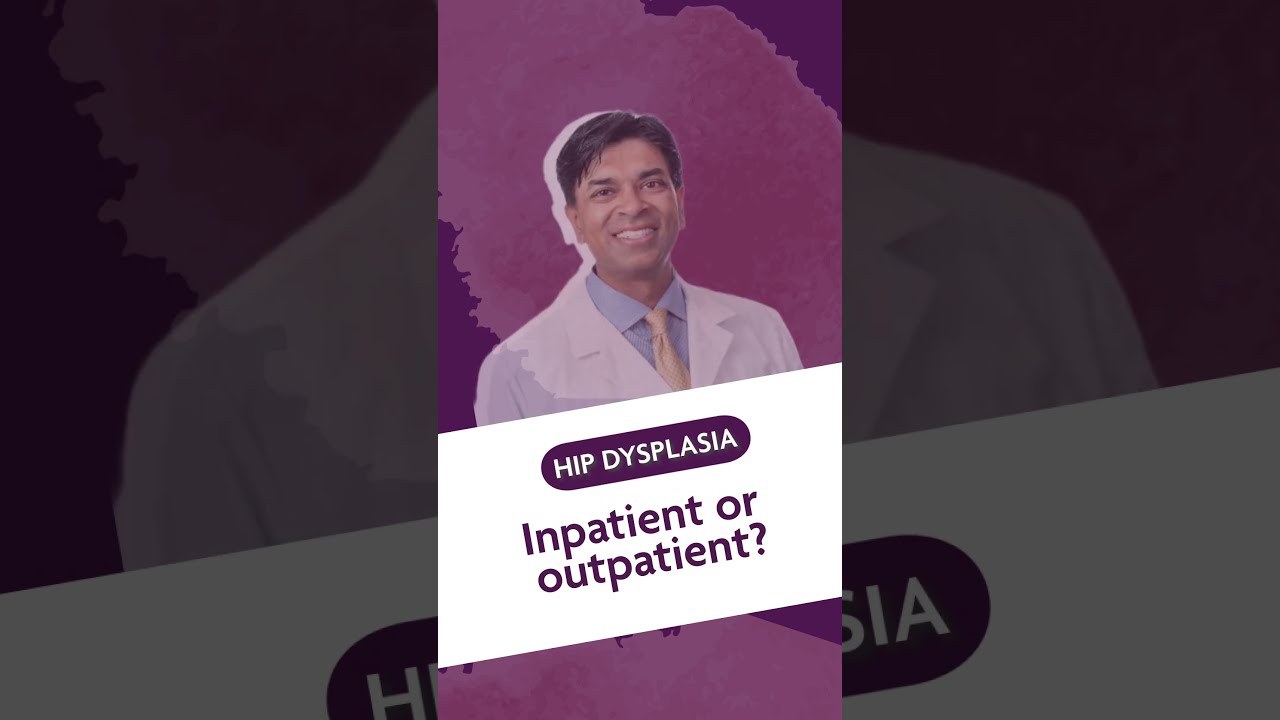It’s easy to take our hips for granted, but stiffness and pain can sideline you from your favorite activities or everyday tasks. The good news is: Whether you’re looking to climb a fourteener or play with your grandkids, we can help! We always begin with non-surgical options before considering surgery. We also discuss hip preservation strategies before a full joint replacement.
Hip Conditions & Injuries
Our goal at Panorama is to work with you to identify the condition or injury in your hip, so we can help you feel better and do more as quickly as possible.
Osteoarthritis
(“Wear and tear” hip arthritis)
Bursitis
(Swollen cushion sac between tissue and hip bone)
Hip Dysplasia
(The ball part of the hip is undercovered by the socket)
Labral Tear
(Locking or catching in your hip)
Femoroacetabular Impingement
(FAI)
Hip or Pelvis Fracture
(Crack or break in your bone)

Hip Non-Surgical Services
There are many non-surgical approaches to treating the hip, including:

Hip Procedures
After our more conservative options have run their course, our experienced team of orthopedic surgeons will help you decide the next steps to improve your condition, which may include hip preservation methods or discussing hip replacement options. “Hip Preservation” is a subspecialty within orthopedics in which surgeons perform procedures designed specifically to preserve a patient’s natural hip joint. Some of our surgical options include:
Ganz Osteotomy
Hip Arthroscopy
Hip Replacement (Both Anterior and posterior approaches)

Resources

VIDEO
How to Use the CPM After Hip Surgery

VIDEO
What are non surgical options for hip dysplasia?

VIDEO
Is treatment inpatient or outpatient for hip dysplasia?

VIDEO
What is recovery like for hip dysplasia?

VIDEO
What are surgical options for hip dysplasia?

VIDEO
What happens if hip dysplasia is left untreated?

Patient Stories
Adrienne’s Story
Adrienne Bulinski, a Broadway dancer, singer, and former Miss Kansas has an ankle replacement at 30. Adrienne was able to return to her active Colorado life style thanks to Dr. Conklin and the Panorama Orthopedics & Spine Center team!
